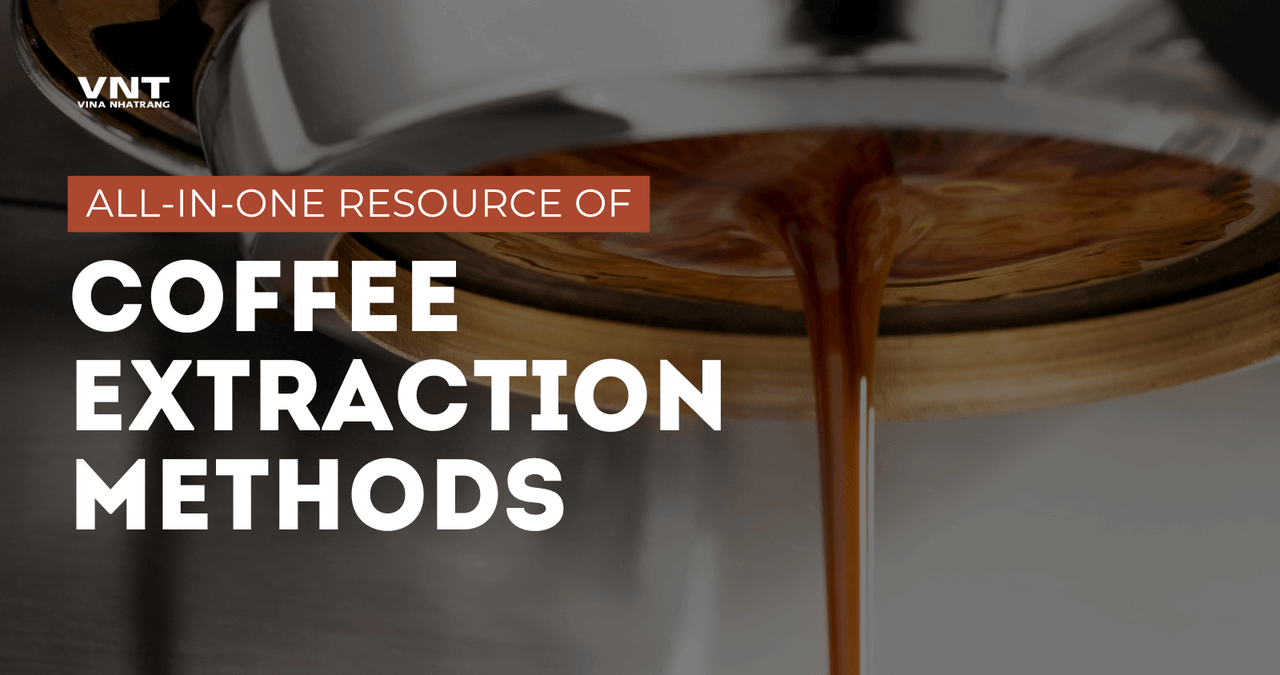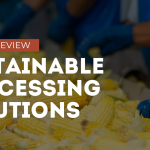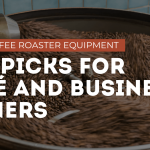The perfect cup of coffee results from a delicate balance between the right beans, grind size, water temperature, and extraction method. Whether you’re a casual coffee drinker or a seasoned barista, understanding the different methods of coffee extraction can enhance your coffee experience. This blog post aims to guide you through the various methods of coffee extraction.
Want to learn more about Instant Coffee Processing? Check out the machines in our Instant Coffee Processing System
What is Coffee Extraction?
Coffee extraction is the process of dissolving soluble compounds from coffee grounds into water, creating the flavorful liquid we know as coffee. The quality of coffee extraction significantly impacts the taste, aroma, and overall quality of the coffee. This process involves complex chemistry, including factors like solubility and extraction rates, which determine how different compounds are pulled from the coffee grounds.
Find out more about the science behind coffee extraction on our guide about Coffee Extraction Technology
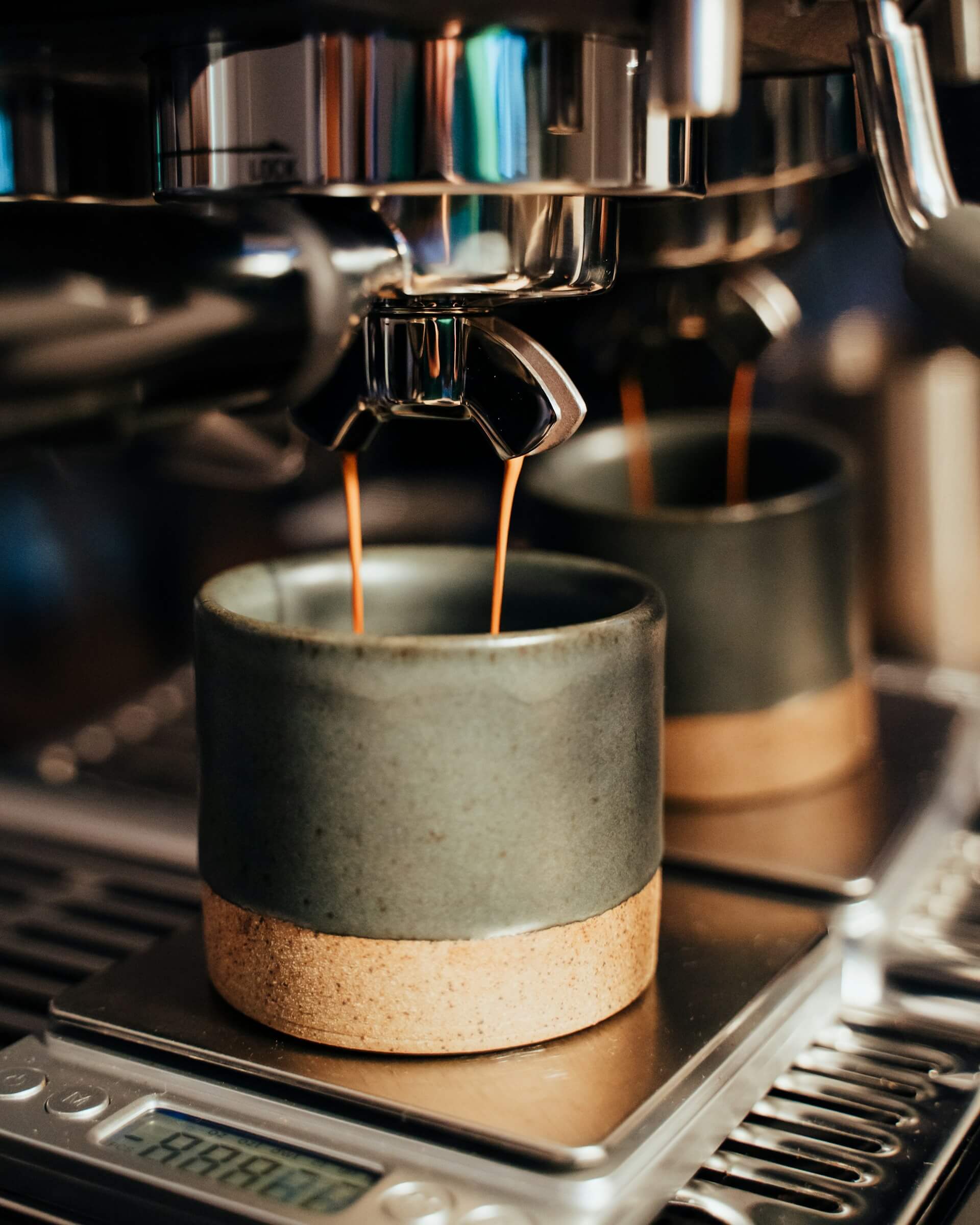
Perfecting the art of coffee extraction: a precise and rewarding process. Photo by Luke Porter on Unsplash
Common Methods of Coffee Extraction
1. Drip/Filter Brewing
This classic method is a staple in many households and coffee shops. Drip brewing involves hot water slowly passing through a bed of ground coffee, extracting the flavors and oils. The process is simple: add ground coffee to a filter, pour in hot water, and let it drip into a carafe below. While convenient, drip brewing can sometimes result in a bitter or watered-down taste if not executed properly.
- Popular Machines: Mr. Coffee, Bonavita, and Cuisinart are popular drip coffee makers.
- Pros: Easy to use, consistent results, and can brew large batches.
- Cons: Limited control over brewing variables, longer brew time compared to some methods.
2. French Press
The French press, also known as a press pot, is a manual brewing method that allows for greater control over extraction time and strength. Coarsely ground coffee is steeped in hot water for a few minutes, then pressed down with a plunger to separate the grounds from the brewed coffee. This method produces a rich, full-bodied cup with a velvety mouthfeel.
- Unique Features: Allows for full immersion of coffee grounds, leading to a robust flavor.
- Pros: Robust flavor, easy to use, easy to clean, and inexpensive.
- Cons: Potential for over-extraction and grittiness if not properly plunged, requires precise timing.
Discover the essential principles behind perfect coffee brewing on What Are The Principles of Coffee Extraction?
3. Pour Over
Pour over brewing is a manual, hands-on method that demands precision and patience. Hot water is slowly and carefully poured over a bed of ground coffee in a spiral or circular motion, allowing for an even extraction. This method is popular among coffee enthusiasts for its ability to highlight the unique flavors and nuances of the beans.
- Techniques: Variations include Chemex, Hario V60, and Kalita Wave.
- Pros: Excellent control over extraction, clean and bright flavor profile.
- Cons: Requires more time and attention, not ideal for large quantities.
4. Espresso
Espresso is the foundation of many popular coffee drinks, including lattes, cappuccinos, and macchiatos. This method uses pressure to force hot water through finely ground, compacted coffee, resulting in a concentrated shot with a rich, syrupy body and a thick crema (foam) on top. Espresso machines can be expensive but offer unparalleled control over variables like temperature, pressure, and extraction time.
- Equipment Needed: Espresso machine, grinder, tamper.
- Pros: Rich, intense flavor; forms the base for many coffee drinks (e.g., lattes, cappuccinos).
- Cons: Expensive equipment, potential for over-extraction and requires skill to perfect.
5. Cold Brew
As the name suggests, cold brew coffee is made by steeping coarsely ground coffee in cold or room-temperature water for an extended period, typically 12-24 hours. The slow extraction process results in a smoother, less acidic beverage with a rich, concentrated flavor. Cold brew is often served over ice or diluted with water or milk.
- Time and Equipment: Requires a long steeping time and a large container.
- Pros: Low acidity, smooth taste, and mellow flavor; can be made in large batches and stored for longer periods.
- Cons: Time-consuming process, potential for over-extraction if steeped too long.
Discover the Best Commercial Roasters for Small Cafes and Restaurants – Our Expert Insights!
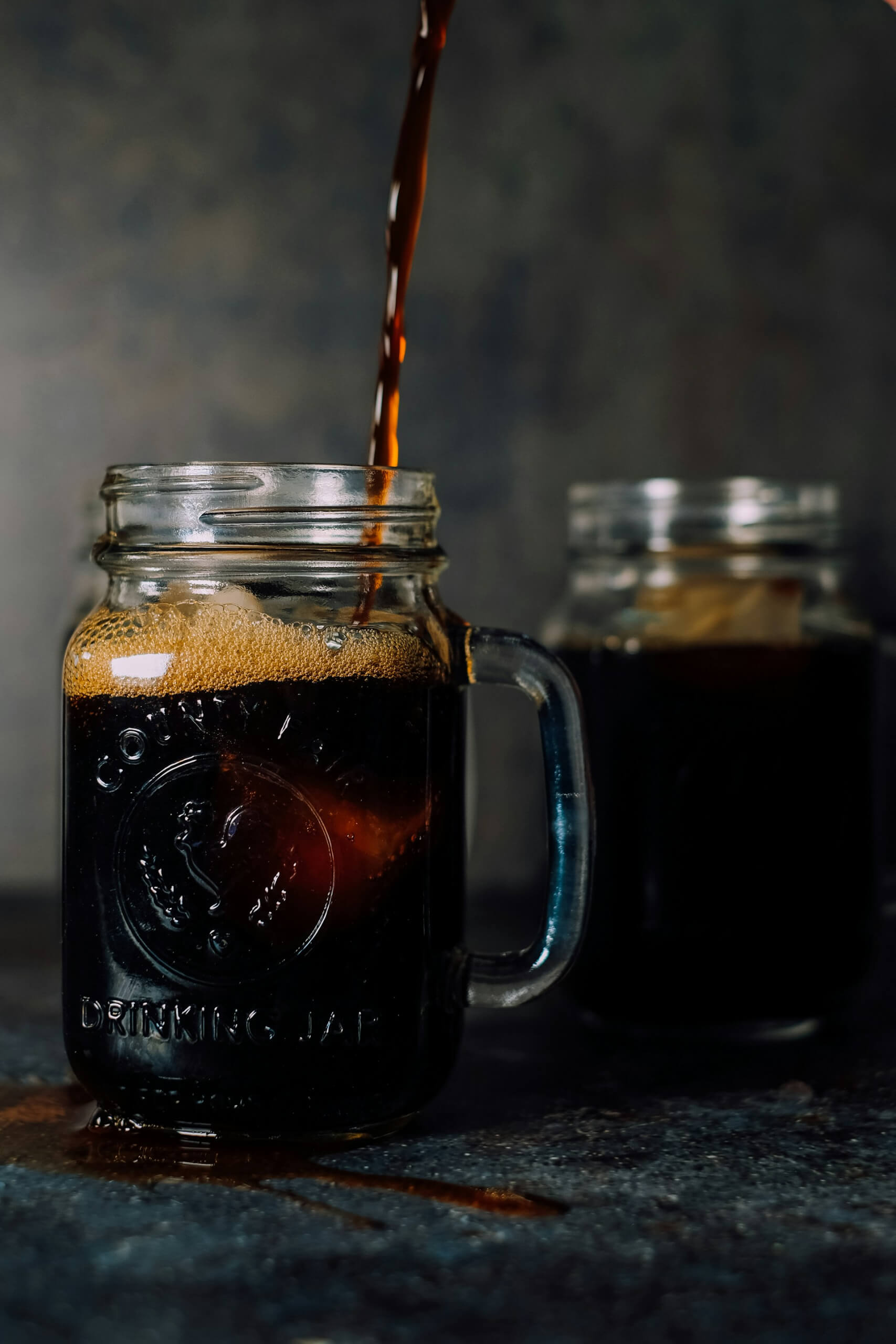
Cold brew method. Photo by Rinck Content Studio on Unsplash
Less Common Methods of Coffee Extraction
1. Siphon/Vacuum Pot
The siphon, or vacuum, method is a visually striking and somewhat theatrical approach to brewing coffee. It involves two glass vessels, one containing water and the other holding the ground coffee. As the water is heated, the vapor pressure forces the water into the upper chamber, where it mixes with the coffee grounds. The mixture is then allowed to steep before being filtered back into the lower chamber.
- Pros: Excellent flavor clarity, precise temperature control, and visually appealing.
- Cons: Fragile equipment, time-consuming, complex setup and cleanup.
2. Turkish/Ibrik
Turkish coffee, also known as Ibrik, is a centuries-old tradition that involves finely ground coffee simmered in a special pot called a cezve or ibrik. The coffee is heated until it froths up, then served with the grounds still present in the cup. This method produces a thick, intense brew with a bold, robust flavor.
- Unique Aspects: The coffee is unfiltered, resulting in a strong, thick brew.
- Pros: Rich, full-bodied flavor, traditional brewing method; cultural experience.
- Cons: Potential for grittiness, requires specialized equipment.
3. Moka Pot
The Moka pot brews a rich, concentrated coffee similar to espresso using steam pressure. Water is heated in the lower chamber, forcing it up through a filter basket packed with ground coffee into the top chamber. The brew has a bold flavor with a creamy texture and modest foam. While not quite true espresso, the Moka pot produces an affordable and portable stovetop version.
- Pros: Bold taste, inexpensive, no electricity required.
- Cons: Limited capacity, requires monitoring to avoid over-extraction.
Factors Influencing Coffee Extraction
While the different brewing methods play a major role in the taste of your coffee, several other variables can significantly impact the extraction process and final flavor. Understanding these factors allows you to fine-tune your technique and achieve optimal extraction.
- Grind Size: The grind size of your coffee beans is crucial. Too coarse, and you’ll under-extract, resulting in a weak, flavorless brew. Too fine, and you risk over-extracting, leading to bitterness. The ideal grind depends on your chosen method – finer for espresso, coarser for french press.
- Water Temperature: Water that’s too hot can burn and over-extract the coffee, while water that’s too cold will under-extract. Most methods call for water between 195°F-205°F (90°C-96°C). Using an accurate thermometer or temperature-controlled kettle helps ensure proper brewing temperature.
- Brew Time: Extraction occurs over time as water passes through the grounds. Too short, and you’ll miss many flavor compounds. Too long, and harsh, bitter flavors are extracted. Factors like grind size affect ideal brew times for different methods.
- Water Quality: The mineral content and overall quality of your water impacts extraction and taste. Filtered or bottled spring water is best to avoid off-flavors from contaminants or extremely hard/soft water.
- Coffee-to-Water Ratio: The ideal coffee-to-water ratio differs by method but is essential for achieving the desired strength and flavor. Experimenting with ratios can help find your perfect brew.
- Freshness: Coffee beans are at peak flavor soon after roasting as aromatic compounds begin dissipating over time. Using freshly roasted beans within 1-3 weeks helps maximize the extraction of delicious flavors.
Explore more: How Industrial Coffee Grinder Impact Coffee Flavor and Consistency
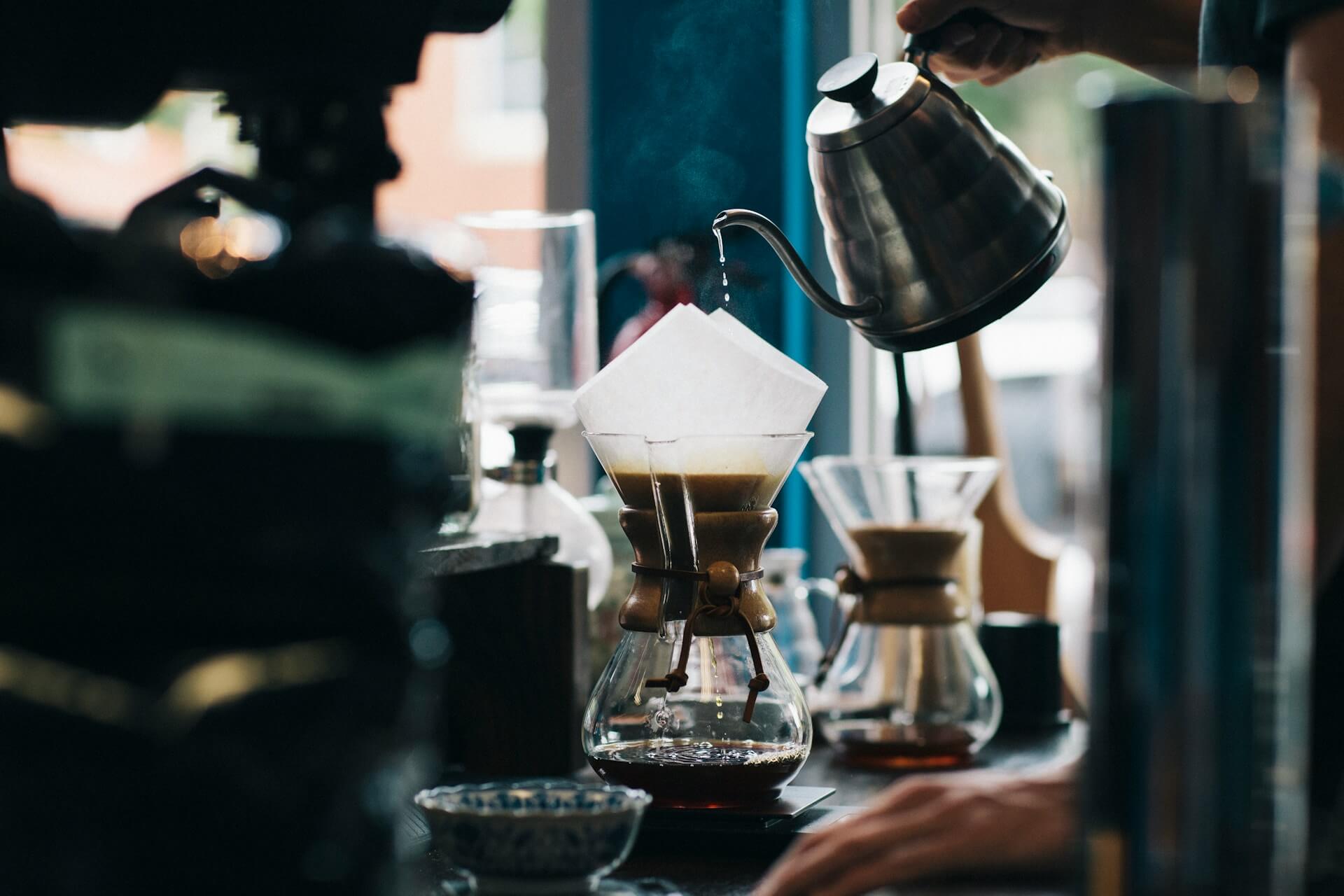
Experimenting can help find your perfect brew. Photo by Karl Fredrickson on Unsplash
Tips for Perfecting Your Coffee Extraction
No matter which brewing method you choose, following some key tips can help ensure you achieve optimal extraction and an exceptional cup of coffee every time.
- Use Fresh, High-Quality Beans: Start with fresh, specialty-grade coffee beans for maximum flavor and aroma. Look for beans with a recent roast date, within 2-4 weeks ideally. This ensures you’re extracting at peak freshness before staling occurs.
- Invest in a Quality Burr Grinder: An inconsistent grind can sabotage extraction. Invest in a quality burr grinder to get a uniform particle size perfect for your brew method. Adjust grind settings to match – finer for espresso, coarser for immersion brews.
- Weigh Your Dosage: For consistent extraction, use a digital scale to accurately measure your coffee dose by weight rather than volume. A common starting ratio is 1-2 tablespoons (7-14g) of ground coffee per 6 oz (180ml) water.
- Use Quality, Filtered Water: Water makes up 98% of your coffee beverage, so it’s important to use good tasting, filtered water without odors or excessive mineral content that can impact extraction and flavor.
- Follow Recipes, Then Experiment: Until you understand all the variables, follow trusted recipes for your brew method. Once familiar, experiment by adjusting factors like dose, grind, temp, and time to develop your palate and preferred taste.
- Master Technique: Proper technique is key, whether it’s evenly distributing grounds, controlling pour rate, or monitoring brew time. Mastering the nitty-gritty details of your method allows you to extract maximum flavor.
- Clean Equipment Regularly: Build-up from oil and residue on equipment like french presses can go rancid and negatively impact flavor. Keep things fresh by disassembling and thoroughly cleaning brewing devices.
With great beans, a good grinder, quality water, and careful technique – you’ll be extracting rich, delicious cups of coffee in no time! Experimentation is key to dialing in your personal taste preferences.
Contact our experts to get a consultation on choosing the best Instant Coffee Extraction System that fits you business needs
Conclusion
Understanding the various methods of coffee extraction allows you to explore different flavors and find the perfect brew for your taste. Whether you prefer the simplicity of drip brewing or the richness of espresso, each method offers unique advantages. So, why not experiment with different techniques and find the one that suits your taste buds best?
